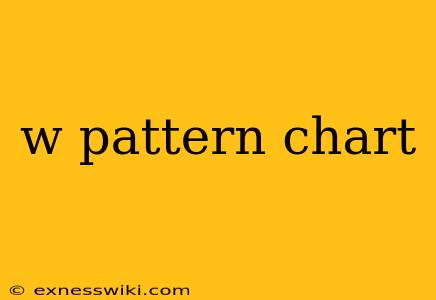Mastering the W Pattern Chart: Your Guide to Effective Time Management
Remember that time back in college when I was juggling multiple classes, a part-time job, and a social life? It was overwhelming, to say the least. I felt like I was drowning in deadlines and commitments, and my productivity was plummeting. Then, I stumbled upon the W Pattern Chart, a time management technique that completely changed my approach to scheduling.
What is the W Pattern Chart?
The W Pattern Chart, also known as the Eisenhower Matrix or Urgent-Important Matrix, is a visual tool used for prioritizing tasks based on their urgency and importance. It's a simple yet powerful method that can help you stay organized and focus on what truly matters.
The Power of the W Pattern
In my opinion, the W Pattern Chart's effectiveness lies in its straightforwardness. It visually separates tasks into four quadrants, making it easy to understand which activities require immediate attention and which can be delegated or even eliminated.
Quadrant 1: Urgent & Important
This quadrant houses tasks that require your immediate action, like a looming deadline for a critical project. These tasks are often accompanied by a sense of urgency and require your full focus.
Quadrant 2: Important & Not Urgent
This quadrant is crucial for long-term success. It includes tasks like planning, strategic thinking, and relationship building. While they may not seem urgent, these activities are crucial for achieving your goals.
Quadrant 3: Urgent & Not Important
This quadrant includes distractions, like emails, phone calls, or meetings that may seem urgent but don't contribute to your long-term goals. Learning to delegate or decline these tasks is key to avoiding burnout.
Quadrant 4: Not Urgent & Not Important
This quadrant represents time-wasting activities like social media scrolling or aimless browsing. Ideally, you should minimize these activities to maximize your productivity.
How to Use the W Pattern Chart
- Identify Your Tasks: Write down all your current tasks and commitments.
- Categorize: Assign each task to one of the four quadrants based on its urgency and importance.
- Prioritize: Focus on Quadrant 1 tasks first, then Quadrant 2. Delegate or decline Quadrant 3 tasks, and avoid Quadrant 4 activities as much as possible.
- Review: Regularly review your W Pattern Chart to adjust priorities and ensure you're staying on track.
**Entity Spotlight: ** The David Allen Company is a renowned productivity consultancy that promotes the "Getting Things Done" (GTD) methodology. Their work emphasizes the importance of capturing, organizing, and prioritizing tasks to achieve a clear and focused workflow. The W Pattern Chart is a valuable tool within the GTD system.
Conclusion:
The W Pattern Chart has become an essential part of my daily routine. It allows me to take control of my time, focus on what truly matters, and avoid feeling overwhelmed by the daily demands of life. By applying the W Pattern method, you too can enhance your time management skills and achieve greater productivity.
